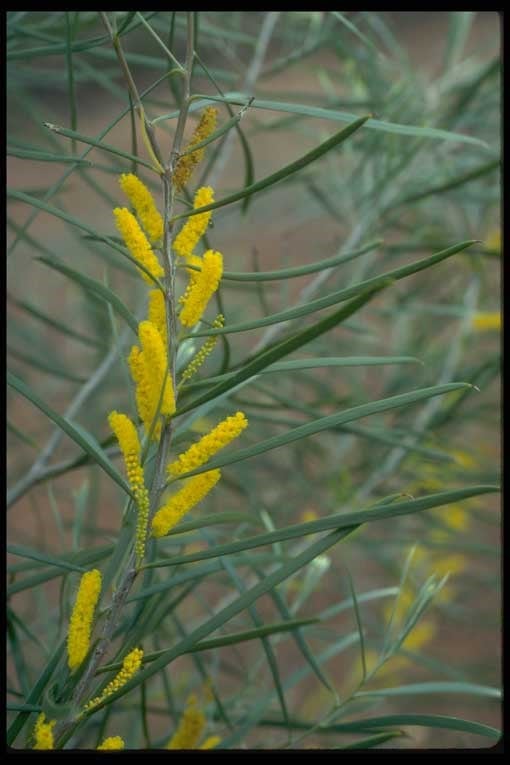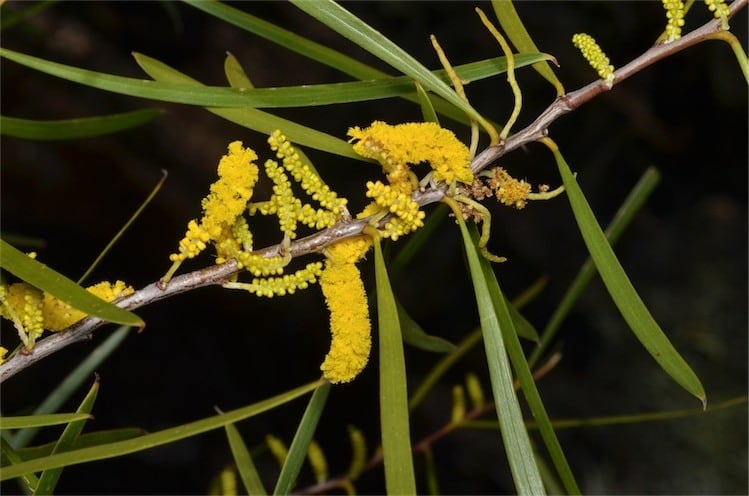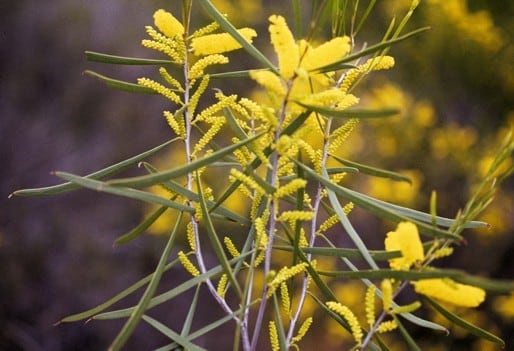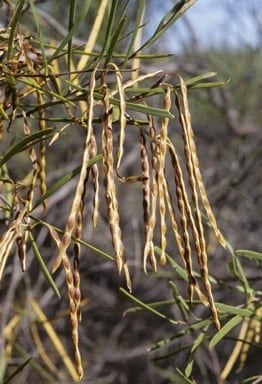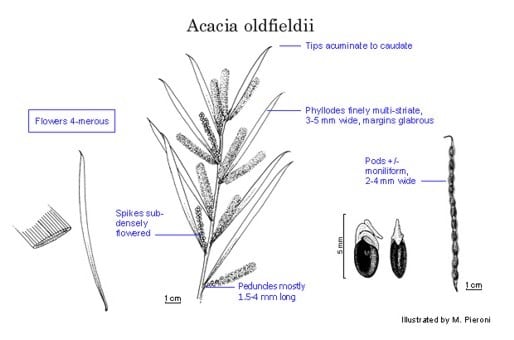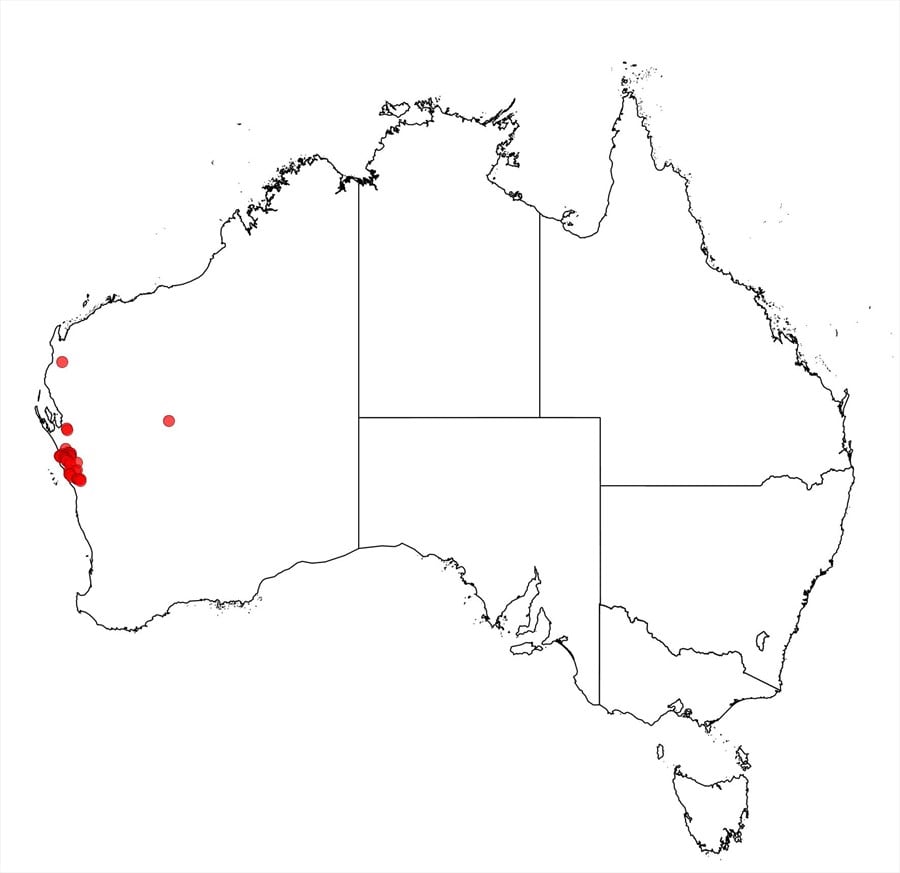Acacia oldfieldii F.Muell.
WATTLE
Acacias of Australia
Family
Fabaceae
Distribution
South-western W.A. where it occurs in two populations on the Murchison R.; common in these populatons.
Description
Rounded or obconic, openly branched, multi-stemmed, spreading shrub or tree 2-4 m high, trunks and main branches somewhat crooked. New growth citron golden-sericeous. Branchlets glabrous. Phyllodes commonly patent to ±reflexed, linear-elliptic to linear-oblanceolate, straight to shallowly incurved, 7-13 cm long, 3-5 mm wide, with margins yellow, caudate to acuminate with delicate, curved tip, coriaceous, subrigid, dark green, glabrous; nerves numerous, closely parallel, occasionally anastomosing, scarcely evident. Inflorescences simple, 2 per axil; peduncles 1.5-4 (-6) mm long, ±appressed-puberulous or glabrous; receptacle glabrous or sparsely puberulous, with hairs white; spikes commonly 30-35 mm long, 4-5 mm diam., loosely flowered, bright golden. Flowers 4-merous; sepals partially united. Pods moniliform to submoniliform, 8–13 cm long, 2–4 mm wide, thin-crustaceous, finely longitudinally wrinkled, glabrous. Seeds longitudinal, elliptic to oblong-elliptic, 3-4 mm long, 1.5-2 mm wide, 1-1.5 mm thick, glossy but sometimes pitted at centre, black; aril cream, much-folded.
Habitat
Grows in deep yellow sand or shallow, yellow-brown sand over sandstone, pH 5.5-6, in dense sandplain scrub or shrubland.
Specimens
W.A.: S of Eradu, A.M.Ashby 1896 (PERTH); 24.1 km from Kalbarri Coast road (Grey St) towards Ajana, Kalbarri Natl Park, R.S. & R.A.Cowan A815 (CANB, K, NY, PERTH, US); 0.5 km S of Yuna on Council reserve, E.N.S.Jackson 3172 (PERTH); 14.5 km N of Murchison R. on North West Coastal Hwy, B.R.Maslin 3649 (PERTH).
Notes
G.Bentham, Fl. Austral. 2: 404 (1864), treated A. oldfieldii as conspecific with A. acuminata which has fimbriolate phyllode margins, more densely flowered, sessile spikes and linear pods. It was included in a reassessment of A. acuminata by B.R.Maslin et al., The Acacia acuminata (Jam) group: an analysis of variation to aid Sandalwood (Santalum spicatum) plantation research (1999, unpublished report) and is now successfully used as a host for the cultivation of Sandalwood, see J.Brand, Austral. Forestry 72: 149-156 (2009). Also related to A. drepanophylla.
FOA Reference
Data derived from Flora of Australia Volumes 11A (2001), 11B (2001) and 12 (1998), products of ABRS, ©Commonwealth of Australia
Author
R.S.Cowan
B.R.Maslin
This identification key and fact sheets are available as a mobile application:
URL: https://apps.lucidcentral.org/wattle/
© Copyright 2018. All rights reserved.

